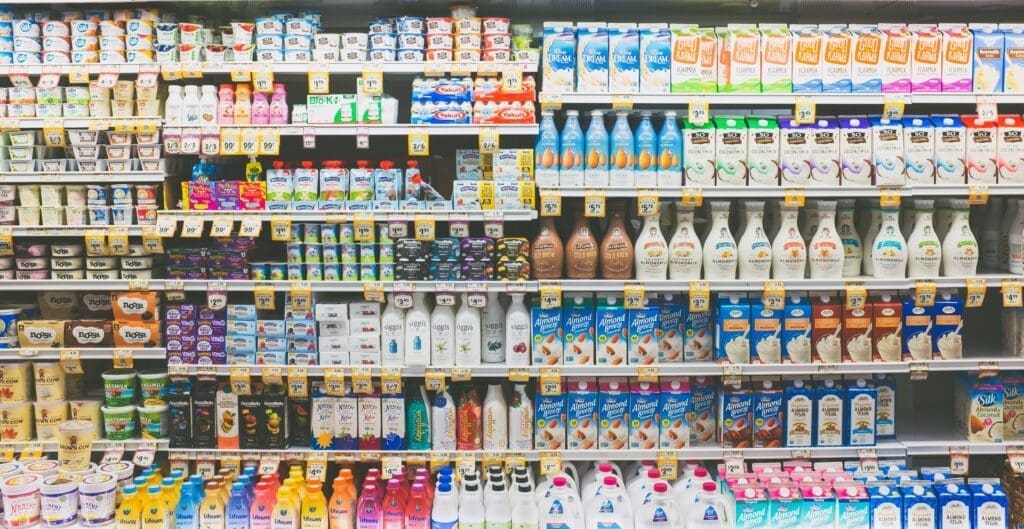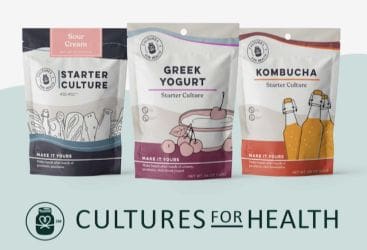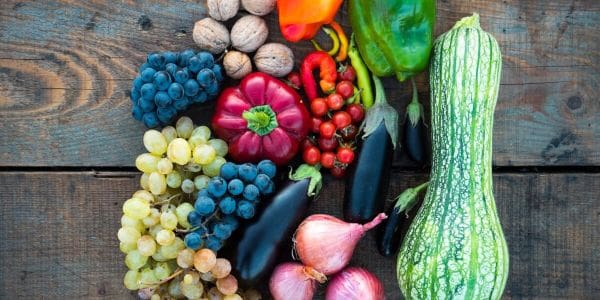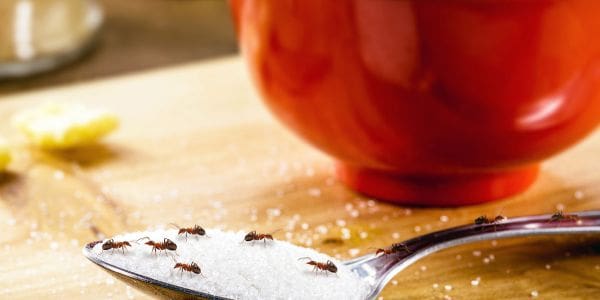Pasteurization Does Harm Real Milk
Proponents of raw milk know that government websites and reports on raw milk are filled with bias and even outright errors. I recently wrote to the Centers for Disease Control to point out a serious error on their website. My comments apply to milk in general, regardless of species, because pasteurization degrades the nutritional value of all species’ milk in the same manner. Just as a calf cannot thrive on pasteurized cow’s milk, so a human baby fails to thrive on pasteurized mother’s milk.

Nutritional Value of Raw Milk
In paragraph two of a section entitled “Pasteurization Is Key to Making Dairy Products Safe” is the statement “Pasteurization does not harm the nutritional value of milk and cheese” (http://www.cdc.gov/healthypets/cheesespotlight/cheese_spotlight.htm). [Note, this article was originally posted in 2008. Since then the link has been taken down by the CDC]
This statement is erroneous, misleading, and factually incorrect. Many nutrients and immune-enhancing components are destroyed by exposure to high heat and the temperatures used during pasteurization. Vitamin A is degraded, proteins and enzymes are denatured, and immunoglobulins are destroyed.
Vitamin A
Regarding vitamin A, an important fat-soluble nutrient, a paper on this subject published in January, 2000 contains the following statement in the abstract. “Vitamin A is very sensitive to chemical degradation caused by oxygen, light, heat, and other stress factors. If light and oxygen are excluded, the dominant degradation reaction for vitamin A derivatives is heat-induced formation of kitols, that is, dimers or higher oligomers” (Runge FE and Heger R. Use of microcalorimetry in monitoring stability studies. J Agric Food Chem. 2000 Jan;48(1):47-55).
Salmonella
A related error on the CDC site concerns salmonella. The agency’s official advice is “Cook poultry, ground beef, and eggs thoroughly before eating. Do not eat or drink foods containing raw eggs, or raw unpasteurized milk” (http://www.cdc.gov/ncidod/dbmd/diseaseinfo/salmonellosis_ g.htm).
However, later on this page we read: “Mother’s milk is the safest food for young infants. Breastfeeding prevents salmonellosis and many other health problems.”
In one instance the CDC warns not to drink unpasteurized milk, and seven points later—within the same section—states that an unpasteurized milk (i.e., mother’s milk) is the safest food for young infants and that breastfeeding prevents salmonellosis and many other health problems. This is highly misleading to the average citizen.
Growth in Premature Babies
There is no question that pasteurization compromises the nutritional value of breast milk. For example, research carried out in 1986 came to the following conclusion (emphasis mine): “As part of a randomised controlled study to assess the effect of pasteurization of breast milk on the growth of very-low-birth-weight infants, the longitudinal changes in serum calcium, phosphorus, alkaline phosphatase, 25-hydroxyvitamin D, and bone-gla-protein concentrations were investigated. Infants fed untreated own mother’s milk grew more rapidly than those fed pasteurized pooled preterm milk and had higher serum alkaline phosphatase and lower phosphorus values. Serum calcium and 25-hydroxyvitamin D (25-OHD) concentrations were similar in the two groups. Despite the provision of 750 IU vitamin D daily from the 2nd week of life, serum 25-OHD values remained low in a number of infants in both groups, suggesting that either malabsorption of vitamin D or hepatic immaturity might be responsible for the persistently low values. Bone gla protein rose significantly after birth and was correlated with alkaline phosphatase values, but not with 25-OHD or phosphorus values. The study supports previous work that indicates that the low phosphorus content of breast milk is probably responsible for biochemical evidence of inadequate bone mineralization and that despite vitamin D supplementation, 25-OHD values do not rise adequately. Thirty-six infants were reexamined between 4 and 11 months after birth. The 25-OHD values had risen significantly in all infants except one who had vitamin D deficiency rickets” (Pettifor JM et al. Mineral homeostasis in very low birth weight infants fed either own mother’s milk or pooled pasteurized preterm milk. J Pediatr Gastroenterol Nutr. 1986 Mar-Apr;5(2):248-53).
Another study carried out in the same year came to the same conclusion (emphasis mine): “It has been shown that milk derived from mothers with term infants is not optimal for premature babies. There is also concern about the effect of heat sterilizing breast milk. At Baragwanath Hospital, the majority of mothers remain with and care for their premature babies. Over many years, pooled pasteurized breast milk has been fed to these babies before direct breast feeding is instituted. A study was done to compare feeding pooled pasteurized breast milk and untreated own mother’s milk to very low birth weight babies. There was a significantly more rapid weight gain both in terms of regaining birth weight and, from this point, to reaching a weight of 1,800 g when using untreated own mother’s milk. This occurred in spite of the fact that there was little difference, especially in terms of energy content, between the two types of breast milk. This was due to the fact that the pooled pasteurized milk was also largely obtained from mothers of premature babies. It is suggested from our data that slower weight gain in the group receiving the pooled pasteurized milk could be due to the pasteurization, which probably destroys heat-labile milk lipase” (Stein H et al. Pooled pasteurized breast milk and untreated own mother’s milk in the feeding of very low birth weight babies: a randomized controlled trial. J Pediatr Gastroenterol Nutr. 1986 Mar-Apr;5(2):242-7). Note that the researchers atrribute the lower weight gain from pasteurized milk to the destruction of lipase.
Destruction of Enzymes
From a study published in 1977 we learn: “Human milk was subjected to heat treatments of graded severity and examined for its content of immunoglobulins, lactoferrin, lysozyme, vitamin B12 -and folate-binder proteins, and lactoperoxidase. Holder pasteurization (62.5 degrees C 30 minutes) reduced the IgA titer by 20 percent, and destroyed the small content of IgM and most of the lactoferrin. Lysozyme was stable to this treatment, but with an increase in temperature there was progressive destruction, to near 100 percent at 100 degrees C. The same was broadly true of the capacity of milk to bind folic acid and protect it against bacterial uptake; with vitamin B12 the binder was more labile at 75 degrees C than at 100 degrees C. The milk contained no detectable lactoperoxidase” (Ford JE et al. Influence of the heat treatment of human milk on some of its protective constituents. J Pediatr. 1977 Jan;90(1):29-35).
Does Pasteurization Affect the Nutritional Benefits of Chicken Bone Broth?
Yes, pasteurization can affect the nutritional benefits of chicken bone broth. The process can lead to a reduction in some nutrients, enzymes, and beneficial bacteria. However, pasteurization also helps to eliminate harmful pathogens, making the chicken bone broth benefits safer to consume.
Obligation to Remove
These studies apply to the milk of all species, not just human milk. Americans look to the CDC to provide factually correct information that is not misleading. The above references prove that pasteurization does harm the nutritional value of milk. Therefore, the CDC is obliged to remove the following erroneous statement from its website, recommendations and all other CDC materials: “Pasteurization does not harm the nutritional value of milk and cheese.”
The available scientific evidence shows that pasteurization does harm the nutritional value of milk and cheese.
This article appeared in the Spring 2008 edition of Wise Traditions, the quarterly journal of the Weston A. Price Foundation.
Proponents of raw milk know that government websites and reports on raw milk are filled with bias and even outright errors. I recently wrote to the Centers for Disease Control to point out a serious error on their website. My comments apply to milk in general, regardless of species, because pasteurization degrades the nutritional value of all species’ milk in the same manner. Just as a calf cannot thrive on pasteurized cow’s milk, so a human baby fails to thrive on pasteurized mother’s milk.
Nutritional Value of Raw Milk
In paragraph two of a section entitled “Pasteurization Is Key to Making Dairy Products Safe” is the statement “Pasteurization does not harm the nutritional value of milk and cheese” (http://www.cdc.gov/healthypets/cheesespotlight/cheese_spotlight.htm).
This statement is erroneous, misleading, and factually incorrect. Many nutrients and immune-enhancing components are destroyed by exposure to high heat and the temperatures used during pasteurization. Vitamin A is degraded, proteins and enzymes are denatured, and immunoglobulins are destroyed.
Vitamin A
Regarding vitamin A, an important fat-soluble nutrient, a paper on this subject published in January, 2000 contains the following statement in the abstract. “Vitamin A is very sensitive to chemical degradation caused by oxygen, light, heat, and other stress factors. If light and oxygen are excluded, the dominant degradation reaction for vitamin A derivatives is heat-induced formation of kitols, that is, dimers or higher oligomers” (Runge FE and Heger R. Use of microcalorimetry in monitoring stability studies. J Agric Food Chem. 2000 Jan;48(1):47-55).
Salmonella
A related error on the CDC site concerns salmonella. The agency’s official advice is “Cook poultry, ground beef, and eggs thoroughly before eating. Do not eat or drink foods containing raw eggs, or raw unpasteurized milk” (http://www.cdc.gov/ncidod/dbmd/diseaseinfo/salmonellosis_ g.htm).
However, later on this page we read: “Mother’s milk is the safest food for young infants. Breastfeeding prevents salmonellosis and many other health problems.”
In one instance the CDC warns not to drink unpasteurized milk, and seven points later—within the same section—states that an unpasteurized milk (i.e., mother’s milk) is the safest food for young infants and that breastfeeding prevents salmonellosis and many other health problems. This is highly misleading to the average citizen.
Growth in Premature Babies
There is no question that pasteurization compromises the nutritional value of breast milk. For example, research carried out in 1986 came to the following conclusion (emphasis mine): “As part of a randomised controlled study to assess the effect of pasteurization of breast milk on the growth of very-low-birth-weight infants, the longitudinal changes in serum calcium, phosphorus, alkaline phosphatase, 25-hydroxyvitamin D, and bone-gla-protein concentrations were investigated. Infants fed untreated own mother’s milk grew more rapidly than those fed pasteurized pooled preterm milk and had higher serum alkaline phosphatase and lower phosphorus values. Serum calcium and 25-hydroxyvitamin D (25-OHD) concentrations were similar in the two groups. Despite the provision of 750 IU vitamin D daily from the 2nd week of life, serum 25-OHD values remained low in a number of infants in both groups, suggesting that either malabsorption of vitamin D or hepatic immaturity might be responsible for the persistently low values. Bone gla protein rose significantly after birth and was correlated with alkaline phosphatase values, but not with 25-OHD or phosphorus values. The study supports previous work that indicates that the low phosphorus content of breast milk is probably responsible for biochemical evidence of inadequate bone mineralization and that despite vitamin D supplementation, 25-OHD values do not rise adequately. Thirty-six infants were reexamined between 4 and 11 months after birth. The 25-OHD values had risen significantly in all infants except one who had vitamin D deficiency rickets” (Pettifor JM et al. Mineral homeostasis in very low birth weight infants fed either own mother’s milk or pooled pasteurized preterm milk. J Pediatr Gastroenterol Nutr. 1986 Mar-Apr;5(2):248-53).
Another study carried out in the same year came to the same conclusion (emphasis mine): “It has been shown that milk derived from mothers with term infants is not optimal for premature babies. There is also concern about the effect of heat sterilizing breast milk. At Baragwanath Hospital, the majority of mothers remain with and care for their premature babies. Over many years, pooled pasteurized breast milk has been fed to these babies before direct breast feeding is instituted. A study was done to compare feeding pooled pasteurized breast milk and untreated own mother’s milk to very low birth weight babies. There was a significantly more rapid weight gain both in terms of regaining birth weight and, from this point, to reaching a weight of 1,800 g when using untreated own mother’s milk. This occurred in spite of the fact that there was little difference, especially in terms of energy content, between the two types of breast milk. This was due to the fact that the pooled pasteurized milk was also largely obtained from mothers of premature babies. It is suggested from our data that slower weight gain in the group receiving the pooled pasteurized milk could be due to the pasteurization, which probably destroys heat-labile milk lipase” (Stein H et al. Pooled pasteurized breast milk and untreated own mother’s milk in the feeding of very low birth weight babies: a randomized controlled trial. J Pediatr Gastroenterol Nutr. 1986 Mar-Apr;5(2):242-7). Note that the researchers atrribute the lower weight gain from pasteurized milk to the destruction of lipase.
Destruction of Enzymes
From a study published in 1977 we learn: “Human milk was subjected to heat treatments of graded severity and examined for its content of immunoglobulins, lactoferrin, lysozyme, vitamin B12 -and folate-binder proteins, and lactoperoxidase. Holder pasteurization (62.5 degrees C 30 minutes) reduced the IgA titer by 20 percent, and destroyed the small content of IgM and most of the lactoferrin. Lysozyme was stable to this treatment, but with an increase in temperature there was progressive destruction, to near 100 percent at 100 degrees C. The same was broadly true of the capacity of milk to bind folic acid and protect it against bacterial uptake; with vitamin B12 the binder was more labile at 75 degrees C than at 100 degrees C. The milk contained no detectable lactoperoxidase” (Ford JE et al. Influence of the heat treatment of human milk on some of its protective constituents. J Pediatr. 1977 Jan;90(1):29-35).
Obligation to Remove
These studies apply to the milk of all species, not just human milk. Americans look to the CDC to provide factually correct information that is not misleading. The above references prove that pasteurization does harm the nutritional value of milk. Therefore, the CDC is obliged to remove the following erroneous statement from its website, recommendations and all other CDC materials: “Pasteurization does not harm the nutritional value of milk and cheese.”
The available scientific evidence shows that pasteurization does harm the nutritional value of milk and cheese.
This article appeared in the Spring 2008 edition of Wise Traditions, the quarterly journal of the Weston A. Price Foundation.
Article used by permission from Rawmilk.com
In our kitchen, we only use cultures from Cultures for Health.
Get yours here and start culturing today.
Popular Articles
Newsletter
Get signed up to get latest updates and new information from the Jersey Milk Cow!
This site uses Akismet to reduce spam. Learn how your comment data is processed.












Leave a Reply